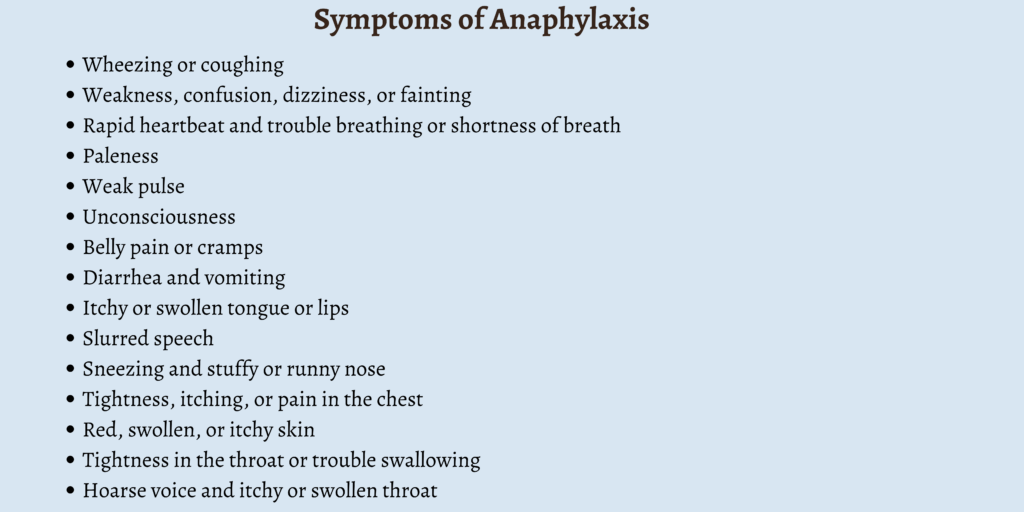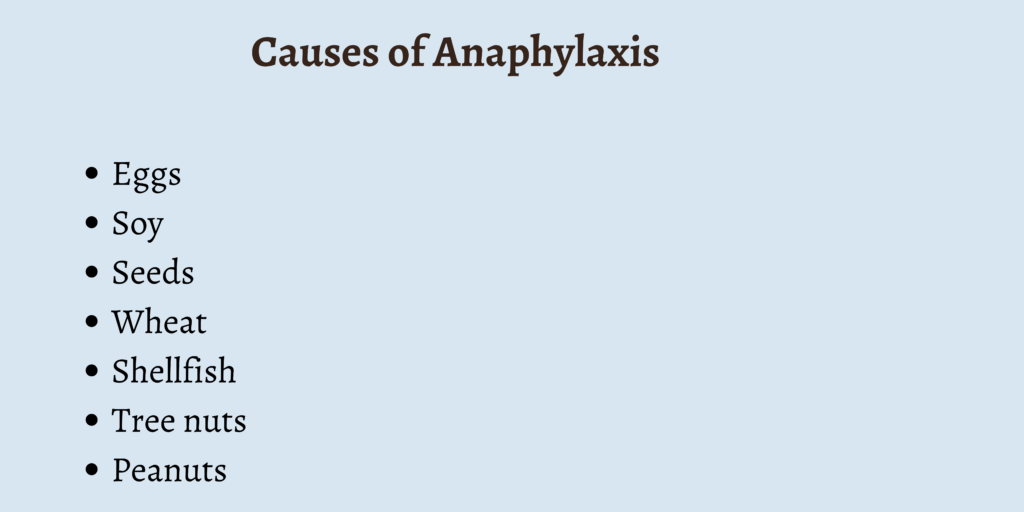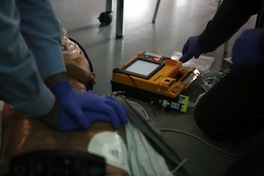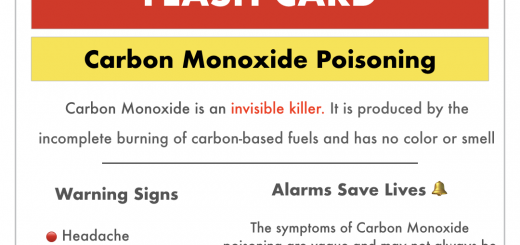First Aid for Anaphylaxis: 8 Treatment Tips
As per research, anaphylaxis occurs in about one in 50 Americans. Given how high that number is, I believe it’s time we familiarize ourselves with what it means and how to deal with it.
Anaphylaxis is a life-threatening and serious allergic reaction which can occur minutes or seconds after a person has been exposed to something they are allergic to. Bee stings and food allergies are often common examples that lead to such severe allergic reactions.
When a person experiences anaphylaxis, there is a flood of chemicals released by the immune system which can cause the body of the victim to go into shock. As a result of this, there is a sudden drop in blood pressure, with the airways getting narrow and blocking the breathing of the victim.
Even if a person is going through treatment for anaphylaxis, they still need to be rushed to an emergency room with the onset of this allergic reaction. Patients need an injection of epinephrine in such situations along with medical attention.
If you want to be prepared to help a person experiencing anaphylaxis, then keep reading. In this article, we will be exploring the symptoms and causes of anaphylaxis, the first aid associated with it, how anaphylaxis is diagnosed, and how it can be prevented.
Symptoms of Anaphylaxis

The symptoms of an anaphylactic reaction could resemble the typical signs of an allergy at first, such as skin rash or a runny nose. However, more serious signs become visible in about 30 minutes.
These symptoms may include:
- Wheezing or coughing
- Weakness, confusion, dizziness, or fainting
- Rapid heartbeat and trouble breathing or shortness of breath
- Paleness
- Weak pulse
- Unconsciousness
- Belly pain or cramps
- Diarrhea and vomiting
- Itchy or swollen tongue or lips
- Slurred speech
- Sneezing and stuffy or runny nose
- Tightness, itching, or pain in the chest
- Red, swollen, or itchy skin
- Tightness in the throat or trouble swallowing
- Hoarse voice and itchy or swollen throat
Causes of Anaphylaxis

One of the main causes of anaphylaxis is food allergies. Some of the foods that can lead to a severe anaphylactic reaction are:
- Eggs
- Soy
- Seeds
- Wheat
- Cow’s milk
- Shellfish
- Tree nuts
- Peanuts
Some of the other allergens that can induce anaphylaxis include:
- Certain substances and medications, such as the dye used for CT scans, nonsteroidal anti-inflammatory drugs (NSAIDs), and penicillin.
- Insect stings from creatures such as bees, yellowjackets, hornets, and wasps.
- Latex
Anaphylaxis First Aid
Here are the first aid steps to follow for anaphylaxis:
- Call the emergency medical services immediately.
- Ask the victim if they have an epinephrine autoinjector with them to treat the allergic reaction.
- n case the victim does need to use an autoinjector, ask them if they require your assistance with injecting the medication. If you need to do it, just remember to press the autoinjector against the thigh of the victim.
- Make the person lie down still and have their face pointed upwards.
- If they have tight clothes on, loosen them. Cover their body with a blanket and make sure to not give them anything to drink.
- If the victim is bleeding from the mouth or vomiting, then turn them to the side to prevent them from choking.
- Perform CPR on the victim if you see no signs of movement, coughing, or breathing. Keep giving them chest compressions till the arrival of the emergency medical services.
- Even if the victim’s symptoms begin to improve, ensure that they get emergency treatment. There is a possibility for the symptoms to return after a victim has experienced anaphylaxis. It’s usually required to monitor a patient at the hospital for a couple of hours following such an occurrence.
How to Diagnose Anaphylaxis
When you go to a doctor to get a diagnosis for anaphylaxis, they will ask you if you have previously had allergic reactions to substances or elements such as insect stings, latex, medications, and particular foods.
In order to confirm the diagnosis, you could be asked to get a blood test done. You could also be tested for allergies with blood tests or skin tests that could aid in determining your trigger.
How to Prevent Anaphylaxis
One of the most significant ways to prevent anaphylaxis is by staying away from the substances that could lead to such an allergic reaction. The other ways to prevent anaphylaxis are as follows:
- Have your medical alert necklace or bracelet on you at all times so that anyone who is around you is always aware of you being allergic to certain drugs or substances.
- Remember to let your providers know about the medication reactions you may have experienced.
- Carry an emergency kit with you all the time, with the kit containing all the prescribed medications. Your healthcare provider can guide you regarding the content of this particular kit. If you use an epinephrine autoinjector, be sure to check its expiration date and refill your prescription prior to its expiry date.
- Be cautious around stinging insects in case you’re allergic to them. Don’t walk barefoot on grass and stay away from brightly colored clothes. Wear pants and long-sleeved shirts and stay away from scented lotions, colognes, and perfumes. Don’t drink from open soda cans while you’re outdoors.
- Whenever you buy a food item or right before you consume something, always read the label carefully. If you’re eating at a restaurant, it’s advised to ask about the ingredients. This is especially important for the ones who suffer from food allergies.
FAQs
What are the common signs of anaphylaxis?
The common signs of anaphylaxis include red skin, rashes on the skin, swollen mouth or throat or tongue, breathing difficulties, and lightheadedness.
How do you treat an anaphylactic shock?
The way to treat an anaphylactic shock is by using an epinephrine autoinjector, performing CPR if needed, and waiting for the emergency medical services to arrive at the scene.
Can anaphylaxis go away?
The symptoms of anaphylaxis can get worse within a few seconds or minutes. They can stay for a bit and go away on their own.
Who is at risk for anaphylaxis?
The risk of having an anaphylactic reaction increases if a person has asthma or allergies or if they have experienced such a reaction before.
How long can anaphylaxis last?
Once a person gets exposed to an allergen, they can experience the symptoms of anaphylaxis for up to four hours. The symptoms usually peak within 30 minutes of exposure.
Conclusion
If you are aware of the foods that cause you allergies, then it can be scary to think that you could experience an allergic reaction all of a sudden. However, there are steps you can take to reduce the chances of such an occurrence.
When you notice the symptoms of anaphylaxis, make sure to inject yourself with epinephrine immediately. If you see someone else experiencing it, give a call to the emergency medical services right away.
Once the victim of an anaphylactic reaction receives proper treatment, it can end up saving their life. Ensure you know your triggers and avoid them, and keep your injector with you wherever you go.
Reach out to your healthcare provider if you go into an anaphylactic shock or if you experience allergy symptoms that are difficult to manage.





